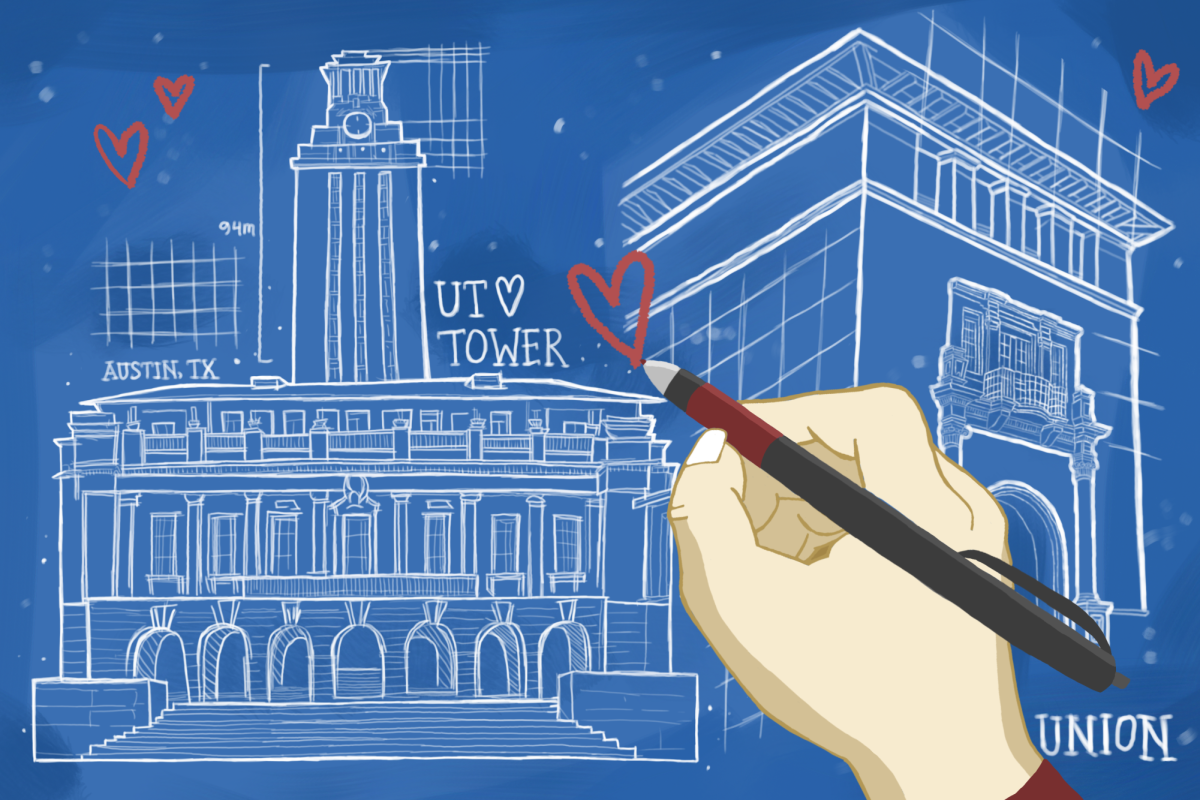From the original Forty Acres to the current 431 acres, UT has consistently made campus revitalization efforts a top priority. As academic buildings undergo constant renovations, student spaces should also be improved to bridge physical space design and mental well-being.
The psychology of physical space, which investigates how people’s surroundings influence their emotions and behavior, has determined that areas meant to increase students’ motivation can take many forms. Therefore, it’s critical to have environments catered to diverse psychological needs.
“When I go (to) study, the things I look for (are) generally areas that are quieter, … places with a more open environment and natural lighting,” biochemistry freshman Hannah Truong said.
When studying, students typically seek an area that motivates them to achieve a specific result. Situational characteristics, such as warmth and moderate brightness within a space can enhance people’s memory, while the absence of natural light in an academic setting has short-term negative effects on intellectual performance.
“The one I go to a lot is (Perry-Castañeda Library) … I started going less because although it has pretty good natural lighting, sometimes it’s a bit dreary,” Truong said.
Although some preferred characteristics of a study space vary among individuals, factors like control and variety determine the benefits of flexible learning spaces for students. A student’s control in a space, such as their ability to shift table layouts or alter a room’s temperature, plays a significant role in their comfortability. It isn’t feasible to cater to all individual preferences in architectural design, but having a variety of academic areas that support privacy and collaboration allows students to explore what spaces are most beneficial for their goals.
Although students’ autonomy within student-centered spaces may initially seem obvious, how can we be expected to advocate for our needs in spaces that fail to uplift us mentally?
“I was very surprised to find out how little (students) felt like they could do within a space,” said Tamie Glass, associate professor of the department of design in the College of Fine Arts. “There’s a discrepancy between sometimes (how) faculty, or maybe leadership, … perceives a space versus how students do.”
If more academic environments considered student spatial experiences as they differ from faculty, students could feel greater comfortability to advocate for their needs among campus leadership. Beyond mere aesthetics and utility, UT’s architecture plays a vital role in supporting students’ mental health.
Dr. Samuel Gosling, professor of psychology in the College of Liberal Arts, specializes in the psychology of physical space and how personality is shown in everyday environments. Gosling recognizes that if architecture were seen as a helping profession, one prioritizing well-being as opposed to artistry, buildings would be largely more effective at helping people.
“It seems to me that all architecture students should be required to take not just basic psychology, but probably quite a lot of psychology,” Gosling said. “Shouldn’t you know something about the individuals you’re building these spaces for?”
Similar to how doctors and social workers learn human psychology to adequately provide diverse support, architects should use physical space psychology to maximize the emotional and psychological fulfillment of their designs. With more recognition of this field and attention to student experiences, campus architects can boost student well-being into a larger landscape of importance.
To empower future generations of Longhorns, we should strive to not only normalize understanding how architecture affects students’ productivity but also shape academic space design by students’ needs.
Williams is a psychology freshman from Richmond, TX.


